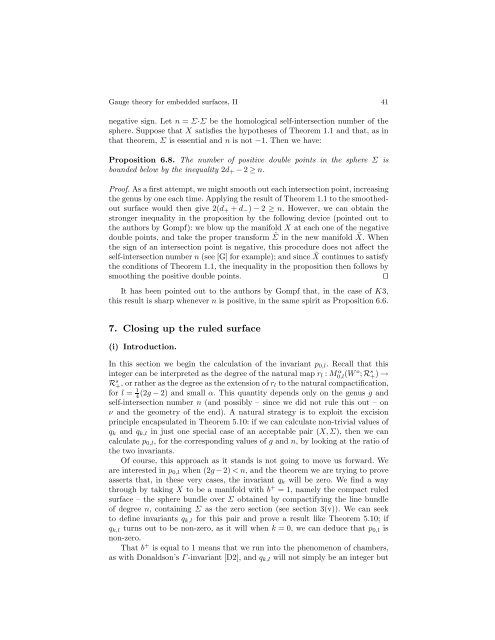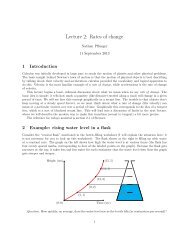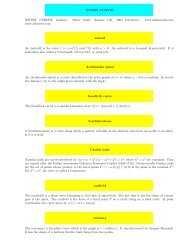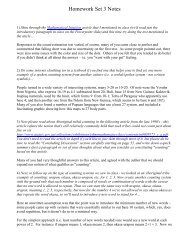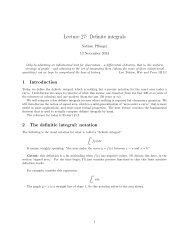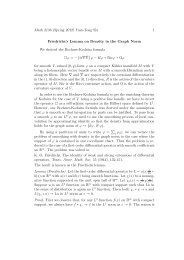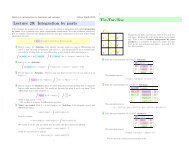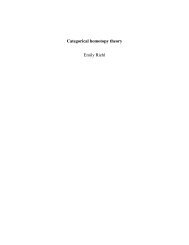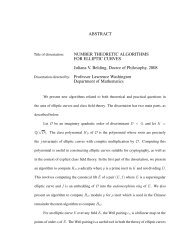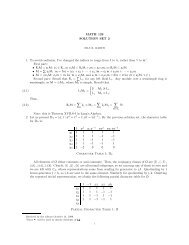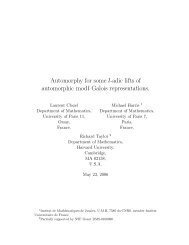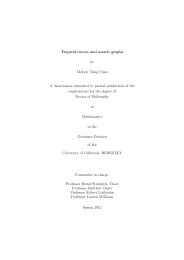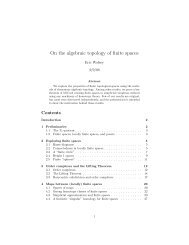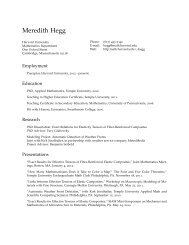Gauge theory for embedded surfaces, II
Gauge theory for embedded surfaces, II
Gauge theory for embedded surfaces, II
Create successful ePaper yourself
Turn your PDF publications into a flip-book with our unique Google optimized e-Paper software.
<strong>Gauge</strong> <strong>theory</strong> <strong>for</strong> <strong>embedded</strong> <strong>surfaces</strong>, <strong>II</strong> 41<br />
negative sign. Let n = Σ·Σ be the homological self-intersection number of the<br />
sphere. Suppose that X satisfies the hypotheses of Theorem 1.1 and that, as in<br />
that theorem, Σ is essential and n is not −1. Then we have:<br />
Proposition 6.8. The number of positive double points in the sphere Σ is<br />
bounded below by the inequality 2d+ − 2 ≥ n.<br />
Proof. As a first attempt, we might smooth out each intersection point, increasing<br />
the genus by one each time. Applying the result of Theorem 1.1 to the smoothedout<br />
surface would then give 2(d+ + d−) − 2 ≥ n. However, we can obtain the<br />
stronger inequality in the proposition by the following device (pointed out to<br />
the authors by Gompf): we blow up the manifold X at each one of the negative<br />
double points, and take the proper trans<strong>for</strong>m ˜ Σ in the new manifold ˜ X.When<br />
the sign of an intersection point is negative, this procedure does not affect the<br />
self-intersection number n (see [G] <strong>for</strong> example); and since ˜ X continues to satisfy<br />
the conditions of Theorem 1.1, the inequality in the proposition then follows by<br />
smoothing the positive double points. ⊓⊔<br />
It has been pointed out to the authors by Gompf that, in the case of K3,<br />
this result is sharp whenever n is positive, in the same spirit as Proposition 6.6.<br />
7. Closing up the ruled surface<br />
(i) Introduction.<br />
In this section we begin the calculation of the invariant p0,l. Recall that this<br />
integer can be interpreted as the degree of the natural map rl : M α 0,l (W o ; Rs +) →<br />
Rs + , or rather as the degree as the extension of rl to the natural compactification,<br />
<strong>for</strong> l = 1<br />
4 (2g − 2) and small α. This quantity depends only on the genus g and<br />
self-intersection number n (and possibly – since we did not rule this out – on<br />
ν and the geometry of the end). A natural strategy is to exploit the excision<br />
principle encapsulated in Theorem 5.10: if we can calculate non-trivial values of<br />
qk and qk,l in just one special case of an acceptable pair (X,Σ), then we can<br />
calculate p0,l, <strong>for</strong> the corresponding values of g and n, by looking at the ratio of<br />
the two invariants.<br />
Of course, this approach as it stands is not going to move us <strong>for</strong>ward. We<br />
are interested in p0,l when (2g − 2)


